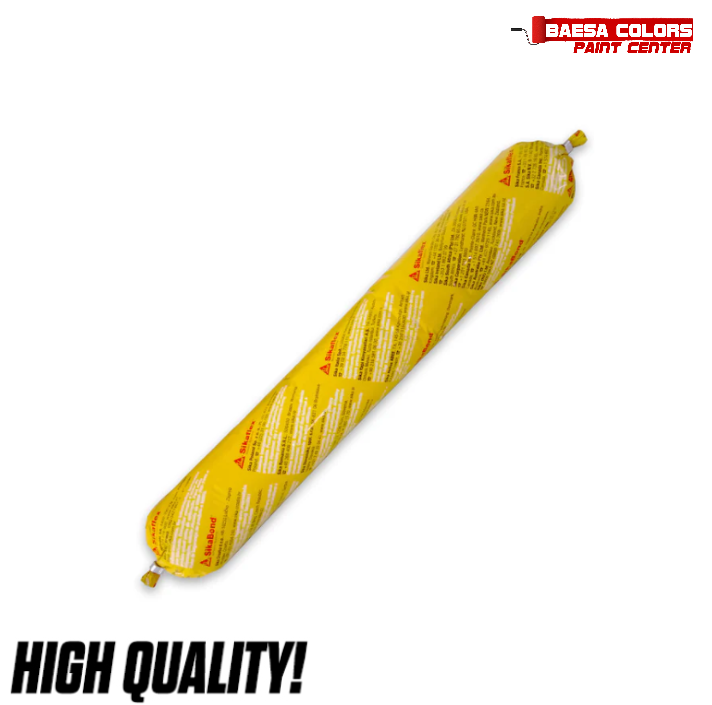BAESA COLORS PAINT CENTER
Sikaflex®-140 Construction
Sikaflex®-140 Construction
Couldn't load pickup availability
Pre-order stocks.
Sikaflex®-140 Construction is a moisture-curing, elastic joint sealant.
USES:
Sealing joints for:
- Movement and connection joints
- Horizontal and vertical movement and connections
- Facade elements
The product can be used on various substrates. Refer to 'Substrate Preparation' section for compatible substrates.
Please note:
The Product may be used for interior and exterior applications.
CHARACTERISTICS / ADVANTAGES:
- Movement capability of ± 25 % (ASTM C 719)
- Bubble-free curing
- Good workability
- Good adhesion to many substrates
ENVIRONMENTAL INFORMATION:
LEED v2009 IEQc 4.1: Low-Emitting Materials - Adhesives and Sealants.
APPROVALS / STANDARDS:
ASTM C920-11 class 25
APPLICATION INSTRUCTIONS
SUBSTRATE PREPARATION:
Priming / pre-treatment
Note: For more details of the primer or pre-treatment products such as application, flash-off and waiting times, refer to the individual Product Data Sheet. Contact Sika Technical Services for additional information.
Note: Primers and activators are adhesion promoters and not an alternative to improve poor preparation / cleaning of the joint surface. Primers also improve the long-term adhesion performance of the sealed joint.
Note: Adhesion tests on project specific substrates must be performed and procedures agreed with all parties before full project application. For more detailed advice and instructions contact Sika Technical Services.
- The substrate must be sound, clean, dry and free of all contaminants such as dirt, oil, grease, cement laitance, old sealants, poorly bonded paint coatings or friable particles which could affect adhesion of the sealant.
- The substrate must be of sufficient strength to resist the stresses induced by the sealant during movement. Use wire brushing, abrading, grinding or grit blasting equipment to prepare the surface.
- Repair all damaged joint edges with suitable Sika repair products
- New or refurbished joints must be saw-cut.
- Where joints in substrate are saw cut. After sawing, all slurry material, must be flushed away and joint surfaces allowed to dry.
- All dust, loose and friable material must be completely removed from all surfaces before application of any activators, primers or sealant.
- For optimum adhesion, joint durability and critical, high performance applications such as joints on multistorey buildings, highly stressed joints, extreme weather exposure or water immersion / exposure. The following priming and/or pre-treatment procedures must be carried out:
Non-porous substrates:
- Aluminium, anodised aluminium, stainless steel, PVC, galvanised steel, powder coated metals, PVDF coated metals and glazed tiles:
- Lightly roughen the substrate with a fine abrasive pad.
- Clean and pre-treat with Sika® Aktivator-205, Sika®
- Aktivator-100 or Sika® Cleaner P applied with a clean cloth.
- Copper, brass and titanium-zinc: Lightly roughen the substrate with a fine abrasive pad.
- Clean and pre-treat with Sika® Aktivator-205 applied with a clean cloth.
- Wait until the flash-off time has been achieved.
- Apply Sika® Primer-3 N with a brush.
- Clean and pre-treated with Sika® Primer-215 applied by brush.
Porous substrates:
Note: Concrete that is 2–3 days old, or with a mattwet (surface dry), must be primed using Sika® Primer3 N applied by brush. Concrete, aerated concrete, cement-based renders, mortars and brick:
- Apply Sika® Primer-3 N or Sika® Primer-115 by brush.
MIXING
- 1-part ready to use
APPLICATION METHOD / TOOLS:
Strictly follow installation procedures as defined in method statements, application manuals and working instructions which must always be adjusted to the actual site conditions.
Masking:
It is recommended to use masking tape where neat or exact joint lines are required. Remove the tape within the skinning time after finishing.
Joint Backing:
After the required substrate preparation, insert a suitable backing rod to the required depth.
Priming:
If required, prime the joint surfaces as recommended in substrate preparation. Avoid excessive application of primer to avoid causing puddles at the base of the joint.


